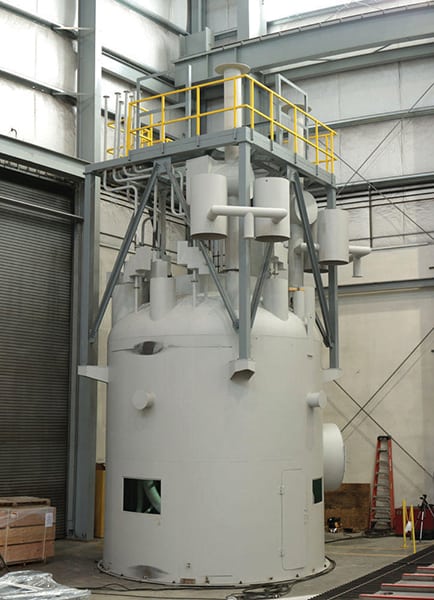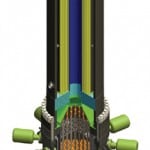The first-ever early site permit (ESP) application for a small modular reactor (SMR) was submitted to the U.S. Nuclear Regulatory Commission (NRC) this May, marking a resurgence for the fledgling nuclear energy technology that has seen a number of setbacks in recent years.
The Tennessee Valley Authority (TVA) submitted an ESP application for a potential future SMR plant at its Clinch River site, 25 miles northwest of Knoxville in eastern Tennessee. The pioneering move could result in an operating plant at the site by 2026 if the TVA chooses to pursue development, experts from the Nuclear Energy Institute said.
The federally owned corporation’s exploration of SMR technology is part of efforts to diversify its fleet, moving it toward low-carbon energy. The TVA also said that the project’s main objective is to demonstrate that SMRs can be used to meet generation needs in an “incremental fashion” while addressing critical energy security issues and tackling carbon reduction goals. The U.S. Department of Energy (DOE) is partially funding the TVA’s regulatory review process.
The NRC has so far received seven applications for ESPs—certification that a site is suitable for construction of a nuclear plant—and all but Clinch River have been focused on full-size reactors. But most applicants have chosen to defer their license applications, citing economic reasons. For the TVA, the value of an ESP application is to reduce licensing uncertainty when it applies for a combined license by reaching early conclusions on siting and environmental issues. However, it said, a final decision to proceed—still “several years away”—will also hinge on economics.
The company has yet to choose an SMR technology. In 2011, the TVA joined forces with Babcock & Wilcox (B&W) to design and license its 180-MW mPower SMR, but that company slashed funding for the mPower program in April 2014, citing unfavorable market conditions. A number of other light-water SMR designs are under development in the U.S., including those by BWX Technologies, Holtec, Westinghouse, and NuScale Power, whose design and licensing is also backed by $217 million in DOE match funding over five years (Figure 3).
Ultimately, the technology decision will be heavily influenced by the SMR design’s attractiveness as it relates to safety, cost, and operability, TVA Senior Manager for SMRs Dan Stout said. “Other considerations include the developer’s financial strength, capabilities and commitments that influence the attractiveness of the business case.” Depending on technology selection, the total electrical output of the site will be a maximum of 800 MW, he added. “The application establishes a plant parameter envelope that includes all four domestic light-water small modular reactor designs. This envelope could support multiple reactors from each of the SMR vendors, up to four mPower reactors, four Holtec reactors, 12 NuScale reactors, or three Westinghouse reactors,” he said.
—Sonal Patel, POWER associate editor.











